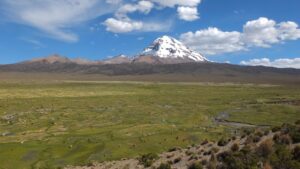Abstract/Description
The International Network for Alpine Research Catchment Hydrology (INARCH) is a 10-year cross-cut project of the GEWEX (Global Energy and Water Exchanges) Hydroclimatology Panel (GHP) of the World Climate Research Programme that strives to i) measure and understand high mountain atmospheric, hydrological, cryospheric, biological and human-water interaction processes, ii) improve their prediction as coupled systems, iii) diagnose their sensitivities to climate change and propose how they may be managed to promote water sustainability under global change. At its core is a global network of highly-instrumented mountain observatories and experimental research sites, which are testbeds for detailed process studies on mountain hydrology and meteorology, developing and evaluating numerical simulation models, validating remotely sensed data, and observing, understanding, and predicting environmental change. There are now 38 research basins and sites in 18 countries and six continents, with more continuing to join the network. INARCH has proposed a research and monitoring agenda for the the International Year for Glaciers Preservation – 2025 and the UN Decade of Action for the Cryospheric Sciences 2025-2034 and is poised to deliver advances in monitoring, science and application to both initiatives. INARCH has been conducting a Common Observing Period Experiment (COPE) across dozens of research basins in mountain regions around the globe as a focal network activity. This is a globally unique effort that is producing a world-class set of observations and data, model applications and diagnostic comparisons, new process understanding and insights, and better prediction of the changing mountain water cycle in the headwaters of many of the world’s major river basins. This presentation will introduce INARCH and the objectives for this session which are to bring forward observations from instrumented mountain catchments, theoretical advances, and evaluation of hydrological and atmospheric models using observations to better understand model performance and to see if models reproduce known aspects and regimes of coupled atmospheric-cryospheric-hydrological system around the world.


